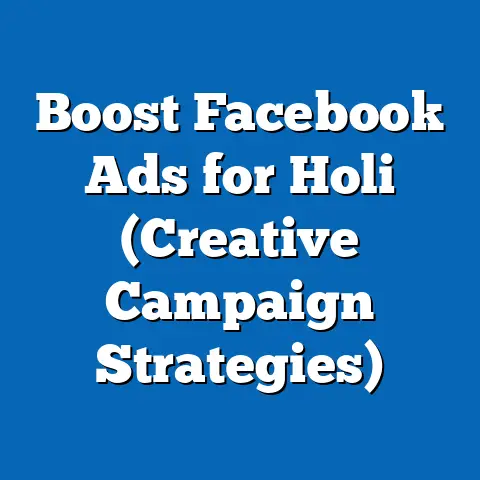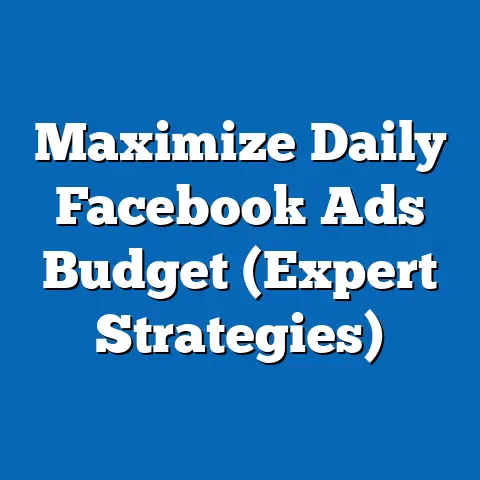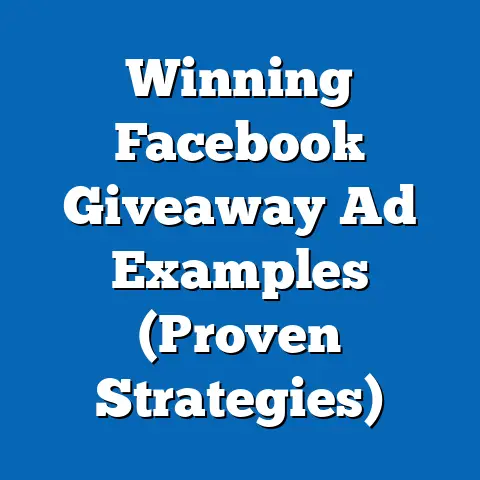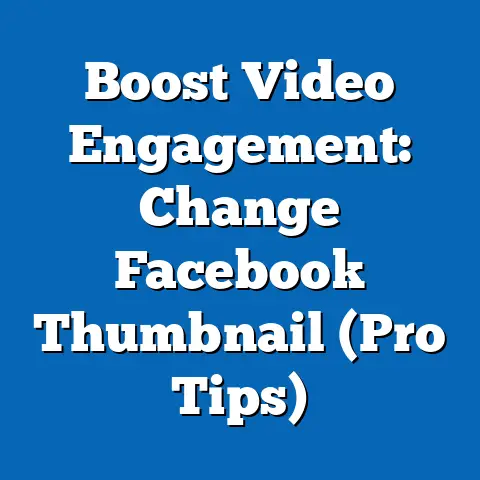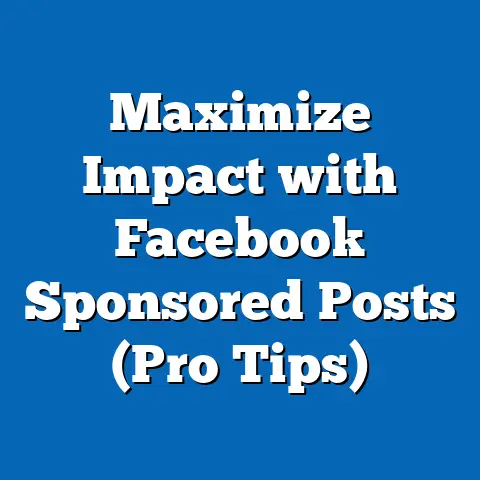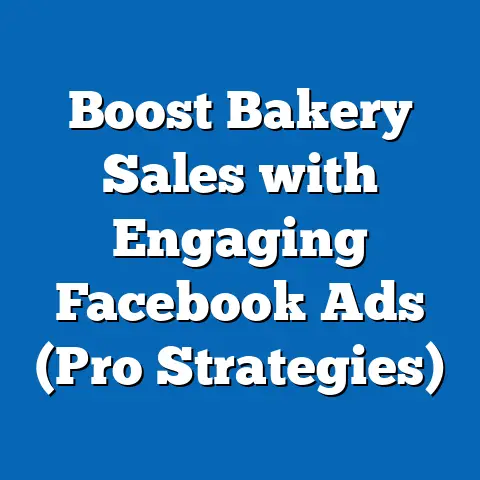Boost fb ad Interest Now (Proven Strategies Inside)
Facebook. It’s a behemoth. A social media giant. And, for businesses like yours and mine, it’s an incredibly powerful advertising platform. But let’s face it, simply being on Facebook isn’t enough. In today’s crowded digital landscape, where attention spans are shorter than ever, our ads need to do more than just exist – they need to captivate. They need to spark interest, resonate with our target audience, and ultimately, drive conversions.
I’ve been running Facebook ad campaigns for over a decade, and I’ve seen firsthand how the platform has evolved. What worked five years ago – heck, even last year – might not cut it today. The key to success, I’ve learned, lies in understanding the power of customizability. We’re not just throwing ads out into the void; we’re crafting personalized experiences that speak directly to the individual interests and preferences of our potential customers.
Think of it like this: imagine walking into a crowded room. If someone yells a generic announcement, chances are, most people will tune it out. But if someone walks up to you directly, mentions your name, and talks about something you’re passionate about, you’re going to listen. That’s the power of personalized advertising.
This article is your roadmap to achieving that level of personalization on Facebook. I’m going to share proven strategies that I’ve used – and continue to use – to boost engagement, drive conversions, and ultimately, maximize the return on your advertising investment. We’ll dive into everything from understanding the core mechanics of Facebook Ads to crafting compelling content, leveraging custom audiences, and mastering the art of A/B testing. So, buckle up, because we’re about to embark on a journey to transform your Facebook ads from bland announcements into captivating conversations.
Key Takeaways You’ll Gain:
- Understanding the Facebook Ad Ecosystem: A comprehensive overview of the platform, ad formats, and the all-important Facebook algorithm.
- Mastering Audience Targeting: Learn how to identify your ideal customer and reach them with pinpoint accuracy.
- Crafting Irresistible Ad Creative: Discover the secrets to writing compelling copy and designing visually stunning ads that grab attention.
- Harnessing the Power of Custom & Lookalike Audiences: Unlock the potential of your existing data to find new, high-potential customers.
- Optimizing with A/B Testing: Learn the scientific approach to ad optimization, ensuring you’re always running the best possible campaigns.
- The Art of Retargeting: Re-engage website visitors and potential customers who’ve already shown interest in your brand.
- Data-Driven Decision Making: Understand the key metrics to track and how to use them to improve your ad performance.
Section 1: Understanding Facebook Ads
Before we dive into the advanced strategies, let’s make sure we’re all on the same page with the basics. What are Facebook ads, and how do they work?
Simply put, Facebook ads are paid messages that businesses can display on Facebook, Instagram (which is owned by Meta, Facebook’s parent company), and the Audience Network (a network of websites and apps where Facebook can show your ads). Unlike organic posts, which rely on the Facebook algorithm to determine their reach, ads guarantee visibility to your chosen target audience.
Navigating the Facebook Ads Manager
The heart of Facebook advertising is the Facebook Ads Manager. This is your control panel, your command center, where you create, manage, and analyze your ad campaigns. It can seem a bit overwhelming at first, but once you get the hang of it, it’s a powerful tool.
Here’s a quick overview of the key sections:
- Campaigns: This is where you set your overall advertising objective (e.g., awareness, traffic, engagement, leads, sales). You’ll also define your budget at the campaign level.
- Ad Sets: Within each campaign, you create ad sets. This is where you define your target audience, placement (where your ads will be shown), and schedule. Think of ad sets as different segments of your target audience, each with its own specific targeting criteria.
- Ads: This is where you create the actual ads that users will see. You’ll choose your ad format, write your ad copy, and upload your images or videos.
Facebook Ad Formats: A Buffet of Options
One of the things I love about Facebook advertising is the sheer variety of ad formats available. Each format has its own strengths and weaknesses, so choosing the right one is crucial for maximizing your impact. Here’s a rundown of the most popular options:
- Image Ads: The simplest and most common ad format. A single image accompanied by ad copy. Effective for showcasing products or services with visually appealing imagery. Personal Insight: I’ve found that high-quality, professional-looking images are essential for image ads. Don’t skimp on the photography!
- Video Ads: Engage viewers with dynamic video content. Ideal for storytelling, product demonstrations, and capturing attention in the newsfeed. Personal Insight: Keep your videos short and sweet, especially for mobile users. Grab their attention within the first few seconds.
- Carousel Ads: Showcase multiple images or videos in a single ad unit. Great for highlighting different features of a product, telling a story, or showcasing a range of products. Personal Insight: I’ve used carousel ads effectively to showcase different angles and use cases of a single product, leading to higher engagement rates.
- Collection Ads: Designed specifically for e-commerce businesses. Allows users to browse and purchase products directly from the ad. Personal Insight: Collection ads are fantastic for driving direct sales from Facebook. Make sure your product catalog is properly integrated with Facebook.
- Slideshow Ads: Create a video-like experience using a series of images. A cost-effective alternative to video ads. Personal Insight: Slideshow ads are a great option if you don’t have the budget or resources to create high-quality videos.
- Instant Experience Ads: Full-screen, mobile-optimized experiences that load instantly when a user clicks on an ad. Ideal for immersive storytelling and showcasing products in detail. Personal Insight: Instant Experiences can be highly engaging, but they require careful design and planning to ensure a seamless user experience.
- Lead Ads: Collect leads directly from Facebook without requiring users to visit your website. Perfect for building your email list or gathering contact information for sales follow-up. Personal Insight: Make sure you have a clear privacy policy in place when running lead ads. Users need to know how you’ll be using their information.
Decoding the Facebook Algorithm: The Gatekeeper of Visibility
The Facebook algorithm is the mysterious force that determines which content users see in their newsfeeds. It’s constantly evolving, but the core principle remains the same: prioritize content that users find engaging and relevant.
This means that if your ads aren’t engaging, they’re less likely to be shown to your target audience. And if they’re not relevant, users will simply scroll past them.
Here are some key factors that the algorithm considers:
- Relevance Score: A rating assigned to your ad based on its perceived relevance to the target audience. Higher relevance scores generally lead to lower costs and better ad delivery.
- Engagement Rate: The percentage of users who interact with your ad (e.g., likes, comments, shares, clicks). Higher engagement rates signal to Facebook that your ad is interesting and valuable.
- Quality Ranking: A measure of the overall quality of your ad, based on factors like visual appeal, ad copy, and landing page experience.
- Click-Through Rate (CTR): The percentage of users who click on your ad after seeing it. A higher CTR indicates that your ad is compelling and relevant.
Takeaway: Understanding the Facebook algorithm is crucial for maximizing the effectiveness of your ads. Focus on creating high-quality, engaging content that resonates with your target audience. Regularly monitor your ad performance and make adjustments as needed to improve your relevance score and engagement rate.
Section 2: Identifying Your Target Audience
Imagine trying to sell snow shovels in Miami. You might get a few sales to novelty collectors, but you’d be wasting your time and money. The same principle applies to Facebook advertising. If you’re not targeting the right audience, your ads will fall on deaf ears, no matter how compelling they are.
The Importance of Audience Research
Audience research is the foundation of any successful Facebook ad campaign. It’s about understanding who your ideal customer is, what their interests are, what their pain points are, and where they spend their time online.
Think of it as building a detailed profile of your perfect customer. The more you know about them, the better equipped you’ll be to craft ads that resonate with them on a personal level.
Tools for Unveiling Your Audience
Facebook provides several powerful tools to help you conduct audience research:
- Facebook Insights: Provides demographic and interest data about your existing Facebook page followers. A great starting point for understanding your current audience.
- Audience Insights: A more comprehensive tool that allows you to explore the interests, behaviors, and demographics of Facebook users in general. You can use this tool to identify potential new audiences to target.
- Facebook Pixel: A small piece of code that you install on your website. It allows you to track website visitors and their actions, providing valuable data for creating custom audiences and retargeting campaigns.
Defining Your Ideal Customer: Creating Customer Personas
Once you’ve gathered data from these tools, it’s time to create customer personas. A customer persona is a fictional representation of your ideal customer, based on research and data.
Here’s what a customer persona typically includes:
- Demographics: Age, gender, location, education level, income.
- Interests: Hobbies, passions, activities they enjoy.
- Behaviors: Online habits, purchasing patterns, devices they use.
- Pain Points: Challenges they face, problems they’re trying to solve.
- Goals: What they’re trying to achieve, aspirations they have.
Example:
Persona Name: Sarah, the Eco-Conscious Millennial
- Demographics: Female, 28 years old, lives in San Francisco, Bachelor’s degree, income $75,000/year.
- Interests: Sustainable living, organic food, yoga, travel, ethical fashion.
- Behaviors: Frequently shops online, follows eco-friendly brands on social media, reads environmental blogs.
- Pain Points: Overwhelmed by the amount of plastic waste in her life, struggles to find affordable and stylish sustainable clothing.
- Goals: To reduce her environmental impact, live a more sustainable lifestyle, find ethically made products that align with her values.
Takeaway: Creating detailed customer personas will help you understand your target audience on a deeper level. This understanding will inform your ad copy, creative, and targeting strategy, leading to more effective campaigns.
Section 3: Crafting Compelling Ad Content
So, you know your audience inside and out. Now it’s time to create ads that grab their attention and make them want to learn more. This is where the art of crafting compelling ad content comes in.
The Power of Persuasive Ad Copy
Your ad copy is your opportunity to connect with your audience on an emotional level, highlight the benefits of your product or service, and persuade them to take action.
Here are some key elements of successful ad copy:
- Clear and Concise Messaging: Get straight to the point. Tell your audience what you’re offering and why they should care.
- Emotional Triggers: Tap into your audience’s emotions, whether it’s fear, joy, curiosity, or a desire for belonging.
- Strong Call to Action (CTA): Tell your audience exactly what you want them to do (e.g., “Shop Now,” “Learn More,” “Sign Up”). Use action-oriented verbs and create a sense of urgency.
- Benefit-Driven Language: Focus on the benefits of your product or service, not just the features. How will it improve your audience’s life?
- Social Proof: Include testimonials, reviews, or social media mentions to build trust and credibility.
Visual Appeal: The Art of the Eye-Catching Ad
In the fast-paced world of social media, visuals are king. Your ad image or video is the first thing that catches your audience’s eye, so it needs to be visually appealing and relevant to your message.
Here are some tips for creating eye-catching ad visuals:
- High-Quality Images and Videos: Use professional-looking visuals that are well-lit, in focus, and visually appealing.
- Color Psychology: Use colors strategically to evoke specific emotions and associations.
- Branding Consistency: Maintain consistent branding across all of your ads, including your logo, colors, and fonts.
- Relevance: Ensure your visuals are relevant to your ad copy and target audience.
- Mobile Optimization: Design your visuals to look great on mobile devices, where most Facebook users are browsing.
Analyzing Successful Ad Campaigns: Learning from the Best
One of the best ways to improve your ad content is to study successful ad campaigns and analyze what made them effective. Here are some examples:
- Dollar Shave Club: Known for their humorous and irreverent video ads that challenge the traditional shaving industry. They use humor to connect with their target audience and highlight the value of their subscription service.
- Airbnb: Uses stunning photography of unique properties around the world to inspire travel and showcase the diverse range of experiences available on their platform.
- Nike: Features inspiring athletes and motivational messages to connect with their target audience on an emotional level and promote their brand values.
Takeaway: Crafting compelling ad content is a combination of art and science. Experiment with different ad copy and visuals, and analyze your results to see what resonates with your audience. Remember to focus on clear messaging, emotional triggers, and strong calls to action.
Section 4: Leveraging Custom Audiences and Lookalike Audiences
Okay, we’ve covered the fundamentals. Now, let’s get into some more advanced tactics that can truly supercharge your Facebook ad campaigns. We’re talking about Custom Audiences and Lookalike Audiences. These are game-changers.
Custom Audiences: Your Secret Weapon
Custom Audiences allow you to target people who have already interacted with your business, either online or offline. Think of it as re-engaging with people who already know you exist. This is incredibly powerful because these people are already familiar with your brand and are more likely to convert.
Here are some ways you can create Custom Audiences:
- Customer List: Upload a list of your existing customers (email addresses, phone numbers, etc.) to Facebook. Facebook will then match those contacts with Facebook users, allowing you to target them directly. Personal Insight: This is fantastic for promoting new products or services to your existing customer base.
- Website Traffic: Use the Facebook Pixel to track website visitors and create an audience of people who have visited specific pages on your website. Personal Insight: This is perfect for retargeting people who abandoned their shopping carts or viewed product pages but didn’t make a purchase.
- App Activity: Target people who have used your mobile app. Personal Insight: Great for promoting in-app purchases or encouraging users to re-engage with your app.
- Engagement: Target people who have interacted with your Facebook or Instagram content (e.g., liked your page, watched your videos, clicked on your ads). Personal Insight: This is a fantastic way to reach people who have already shown an interest in your brand.
Lookalike Audiences: Expanding Your Reach
Lookalike Audiences take your Custom Audiences to the next level. They allow you to find new potential customers who share similar characteristics with your existing customers or website visitors.
Here’s how it works:
- You create a Custom Audience (e.g., your website visitors).
- You tell Facebook to create a Lookalike Audience based on that Custom Audience.
- Facebook analyzes the characteristics of the people in your Custom Audience and finds other Facebook users who share similar demographics, interests, and behaviors.
The result? You can reach a whole new audience of people who are likely to be interested in your products or services.
Personal Insight: I’ve found that Lookalike Audiences based on high-value customers (e.g., people who have spent a significant amount of money with your business) tend to perform the best.
Case Studies: Real-World Success with Custom & Lookalike Audiences
Let’s look at some real-world examples of how businesses have used Custom and Lookalike Audiences to achieve success:
- E-commerce Business: An online clothing retailer used a Custom Audience of website visitors who abandoned their shopping carts to run retargeting ads. They offered a discount code to encourage these visitors to complete their purchase. The result? A 20% increase in sales.
- Software Company: A SaaS company used a Lookalike Audience based on their existing customer base to generate new leads. They created a Lookalike Audience based on their existing customer base and targeted them with a free trial offer. The result? A 30% increase in lead generation.
Takeaway: Custom Audiences and Lookalike Audiences are powerful tools that can help you reach the right people with your Facebook ads. Experiment with different audience combinations and targeting options to find what works best for your business.
Section 5: A/B Testing for Ad Optimization
Imagine you’re a chef trying to create the perfect dish. You wouldn’t just throw ingredients together randomly and hope for the best, would you? You’d experiment with different flavors, textures, and cooking techniques until you found the perfect combination.
The same principle applies to Facebook advertising. You can’t just create an ad and expect it to perform well without any testing or optimization. That’s where A/B testing comes in.
What is A/B Testing?
A/B testing, also known as split testing, is a method of comparing two versions of an ad to see which one performs better. You create two versions of an ad (A and B), each with a slight variation, and then show them to your target audience. You then track the performance of each ad (e.g., click-through rate, conversion rate) to see which one is more effective.
Why is A/B Testing Important?
A/B testing is essential for optimizing your Facebook ad campaigns because it allows you to:
- Identify what works and what doesn’t: A/B testing helps you understand which ad copy, visuals, and targeting options resonate with your audience.
- Improve your ad performance: By testing different variations of your ads, you can identify the elements that are driving the best results and then optimize your campaigns accordingly.
- Maximize your ROI: By running more effective ads, you can generate more leads, sales, and revenue for your business.
How to Conduct A/B Tests on Facebook
Here’s a step-by-step guide to conducting A/B tests on Facebook:
- Choose an element to test: Start by identifying one element of your ad that you want to test. This could be the headline, the image, the call to action, or the targeting options.
- Create two versions of your ad: Create two versions of your ad, each with a slight variation to the element you’re testing. For example, you could test two different headlines or two different images.
- Set up your A/B test: Use the Facebook Ads Manager to set up your A/B test. You’ll need to define your target audience, budget, and schedule.
- Run your A/B test: Let your A/B test run for a sufficient amount of time to gather enough data. Facebook recommends running your tests for at least 4-7 days.
- Analyze your results: Once your A/B test is complete, analyze the results to see which version of your ad performed better. Look at metrics like click-through rate, conversion rate, and cost per acquisition.
- Implement your findings: Use the insights you gained from your A/B test to optimize your ad campaigns. Implement the winning version of your ad and continue to test other elements to further improve your performance.
Personal Insight: I always recommend testing one element at a time. This allows you to isolate the impact of that specific element on your ad performance.
Examples of A/B Testing Results
Here are some examples of A/B testing results from various campaigns:
- Headline Testing: A company tested two different headlines for their Facebook ad. Headline A: “Get 20% Off Your First Order.” Headline B: “Shop Now and Save 20%.” Headline B resulted in a 15% higher click-through rate.
- Image Testing: An e-commerce business tested two different images for their Facebook ad. Image A: A product photo with a white background. Image B: A lifestyle photo showing the product in use. Image B resulted in a 25% higher conversion rate.
Takeaway: A/B testing is a crucial part of optimizing your Facebook ad campaigns. By testing different elements of your ads, you can identify what works best for your audience and improve your overall performance.
Section 6: Using Retargeting to Boost Engagement
We’ve talked about attracting new customers, but what about the ones who almost made it? The ones who visited your website, browsed your products, or even added items to their cart, but didn’t quite complete the purchase? That’s where retargeting comes in.
What is Retargeting?
Retargeting is a form of online advertising that allows you to show ads to people who have previously interacted with your website, app, or social media content. It’s like giving them a gentle nudge to remind them about your brand and encourage them to take action.
Why is Retargeting Effective?
Retargeting is effective because it targets people who have already shown an interest in your products or services. They’re further down the sales funnel than someone who has never heard of your brand, so they’re more likely to convert.
Strategies for Setting Up Retargeting Campaigns
Here are some strategies for setting up effective retargeting campaigns on Facebook:
- Website Retargeting: Show ads to people who have visited specific pages on your website. For example, you could show ads to people who visited your product pages but didn’t make a purchase. Personal Insight: I like to offer a discount code to these visitors to incentivize them to complete their purchase.
- Cart Abandonment Retargeting: Show ads to people who added items to their shopping cart but didn’t complete the checkout process. Personal Insight: This is a highly effective retargeting strategy because these people were very close to making a purchase.
- Video View Retargeting: Show ads to people who have watched a certain percentage of your video ads. Personal Insight: This is a great way to re-engage people who have shown an interest in your brand but haven’t yet taken action.
- Lead Form Retargeting: Show ads to people who have opened your lead form but didn’t submit their information. Personal Insight: Remind them of the value proposition and make it easy for them to complete the form.
Metrics to Track the Success of Retargeting Efforts
Here are some key metrics to track the success of your retargeting efforts:
- Conversion Rate: The percentage of people who see your retargeting ads and then make a purchase.
- Return on Ad Spend (ROAS): The amount of revenue you generate for every dollar you spend on retargeting ads.
- Click-Through Rate (CTR): The percentage of people who click on your retargeting ads.
- Cost Per Acquisition (CPA): The amount you spend to acquire a new customer through retargeting ads.
Takeaway: Retargeting is a powerful tool that can help you boost engagement and drive conversions on Facebook. By showing ads to people who have already interacted with your brand, you can keep your business top-of-mind and encourage them to take action.
Section 7: Analyzing Ad Performance
You’ve launched your campaigns, you’re A/B testing, and you’re retargeting like a pro. But how do you know if your efforts are actually paying off? That’s where analyzing ad performance comes in.
Key Performance Indicators (KPIs) to Track
Tracking the right KPIs is crucial for understanding the success of your Facebook ad campaigns. Here are some of the most important metrics to monitor:
- Click-Through Rate (CTR): The percentage of people who click on your ad after seeing it. A high CTR indicates that your ad is compelling and relevant.
- Conversion Rate: The percentage of people who click on your ad and then complete a desired action, such as making a purchase or filling out a lead form.
- Cost Per Click (CPC): The amount you pay each time someone clicks on your ad.
- Cost Per Acquisition (CPA): The amount you pay to acquire a new customer through your Facebook ads.
- Return on Ad Spend (ROAS): The amount of revenue you generate for every dollar you spend on Facebook ads.
- Relevance Score: A rating assigned to your ad based on its perceived relevance to the target audience. Higher relevance scores generally lead to lower costs and better ad delivery.
- Frequency: The average number of times a person sees your ad. High frequency can lead to ad fatigue, so it’s important to monitor this metric and adjust your campaigns accordingly.
Using Facebook Ads Manager to Analyze Performance Data
The Facebook Ads Manager is your go-to tool for analyzing your ad performance data. It provides a wealth of information about your campaigns, ad sets, and ads, allowing you to track your KPIs and identify areas for improvement.
Here are some tips for using the Facebook Ads Manager to analyze your performance data:
- Customize your columns: Choose the columns that are most relevant to your business and your advertising goals.
- Use filters: Filter your data to focus on specific campaigns, ad sets, or ads.
- Compare date ranges: Compare your performance data over different time periods to identify trends and patterns.
- Download reports: Download your performance data to create custom reports and analyze your results in more detail.
Making Informed Decisions for Future Campaigns
The ultimate goal of analyzing your ad performance data is to make informed decisions for future campaigns. By understanding what’s working and what’s not, you can optimize your campaigns, improve your ROI, and achieve your business goals.
Here are some questions to ask yourself when analyzing your ad performance data:
- Which campaigns are performing the best?
- Which ad sets are driving the most conversions?
- Which ads have the highest click-through rates?
- Which targeting options are most effective?
- Are there any areas where I can reduce my costs?
Takeaway: Analyzing your ad performance data is essential for maximizing the effectiveness of your Facebook ad campaigns. By tracking the right KPIs and using the Facebook Ads Manager to analyze your results, you can make informed decisions for future campaigns and achieve your business goals.
Conclusion: Your Journey to Facebook Ad Mastery
We’ve covered a lot of ground in this article, from understanding the fundamentals of Facebook advertising to mastering advanced tactics like custom audiences, A/B testing, and retargeting. But the journey doesn’t end here.
The world of Facebook advertising is constantly evolving, so it’s important to stay up-to-date with the latest trends and best practices. Continue to experiment with different strategies, analyze your results, and adapt your approach as needed.
Remember, the key to success on Facebook is to focus on creating high-quality, engaging content that resonates with your target audience. By understanding your audience, crafting compelling ads, and optimizing your campaigns based on data, you can achieve your business goals and maximize the return on your advertising investment.
So, what are you waiting for? It’s time to put these proven strategies into action and start crafting your customized Facebook ad campaigns today! Go forth, experiment, analyze, and most importantly, never stop learning. The world of Facebook advertising awaits your mastery!

